
Carolyn Wilke
Carolyn Wilke is a freelance science journalist based in Chicago and former staff writer at Science News for Students. She holds a Ph.D. in environmental engineering at Northwestern University, where she studied how light plays into the chemistry and toxicity of different types of nanoparticles under environmental conditions. Her experience as a AAAS Mass Media Fellow at The Sacramento Bee convinced her to leave the lab to write about science instead. Carolyn is a former Science News intern and has also reported on the life sciences for The Scientist. She enjoys writing about materials science, chemistry, microbiology and all things related to the environment.

Trustworthy journalism comes at a price.
Scientists and journalists share a core belief in questioning, observing and verifying to reach the truth. Science News reports on crucial research and discovery across science disciplines. We need your financial support to make it happen – every contribution makes a difference.
All Stories by Carolyn Wilke
-
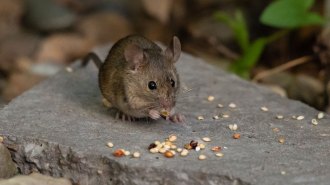 Neuroscience
NeuroscienceNewly discovered cells in mice can sense four of the five tastes
Some cells in mice can sense bitter, sweet, sour and umami. Without the cells, some flavor signals don’t get to the ultimate tastemaker — the brain.
-
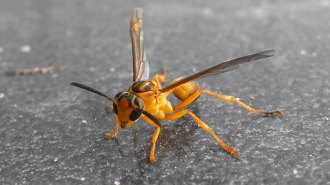 Animals
AnimalsA wasp was caught on camera attacking and killing a baby bird
Some wasps scavenge carrion or pluck parasites off birds, but reports of attacks on live birds are rare.
-
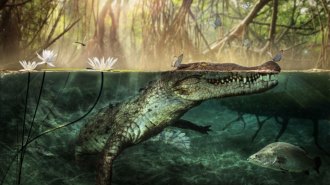 Paleontology
PaleontologyAn ancient skull hints crocodiles swam from Africa to the Americas
A group of crocs, or at least one pregnant female, may have made a transatlantic journey millions of years ago to colonize new land.
-
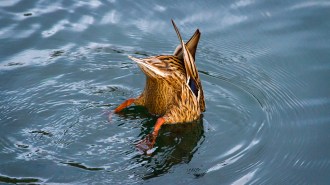 Life
LifeFish eggs can hatch after being eaten and pooped out by ducks
In the lab, a few carp eggs survived and even hatched after being pooped out by ducks. The finding may help explain how fish reach isolated waterways.
-
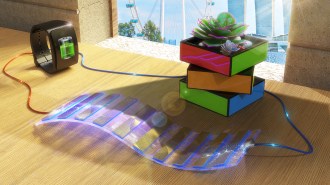 Physics
PhysicsA new device can produce electricity using shadows
Even under low light, this new technology exploits the contrast between light and shade to produce a current that can power small electronics.
-
 Life
LifeNeon colors may help some corals stage a comeback from bleaching
When some corals bleach, they turn bright colors. Stunning hues may be part of a response that helps the corals recover and reunite with their algae.
-
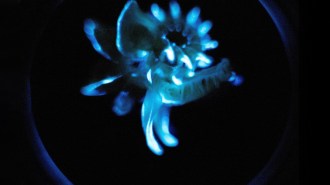 Chemistry
ChemistryHere’s a clue to how this tube worm’s slime can glow blue for days
Mucus oozed by a marine tube worm can glow for up to 72 hours. New results suggest that the light may sustain itself through some clever chemistry.
-
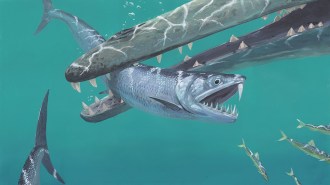 Paleontology
PaleontologySaber-toothed anchovy relatives hunted in the sea 50 million years ago
Unlike today’s plankton-eating anchovies with tiny teeth, ancient anchovy kin had lower jaw of sharp spikes paired with a single giant sabertooth.
-
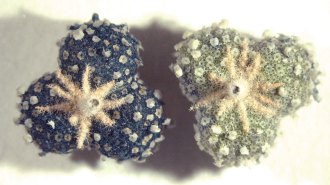 Chemistry
ChemistryAncient recipes led scientists to a long-lost natural blue
Led by medieval texts, scientists hunted down a plant and extracted from its tiny fruits a blue watercolor whose origins had long been a mystery.
-
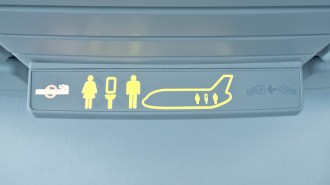 Microbes
MicrobesAirplane sewage may be helping antibiotic-resistant microbes spread
Along with drug-resistant E. coli, airplane sewage contains a diverse set of genes that let bacteria evade antibiotics.
-
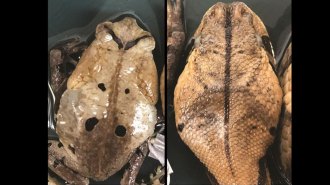 Animals
AnimalsCongolese giant toads may mimic venomous snakes to trick predators
If Congolese giant toads mimic venomous Gaboon vipers, it would be the first reported case of a toad imitating a snake.
-
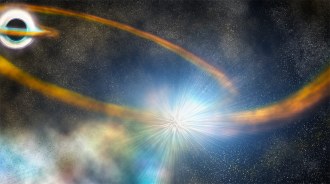 Space
SpaceA supermassive black hole shredded a star and was caught in the act
Astronomers have gotten the earliest glimpse yet of a black hole ripping up a star, a process known as a tidal disruption event.